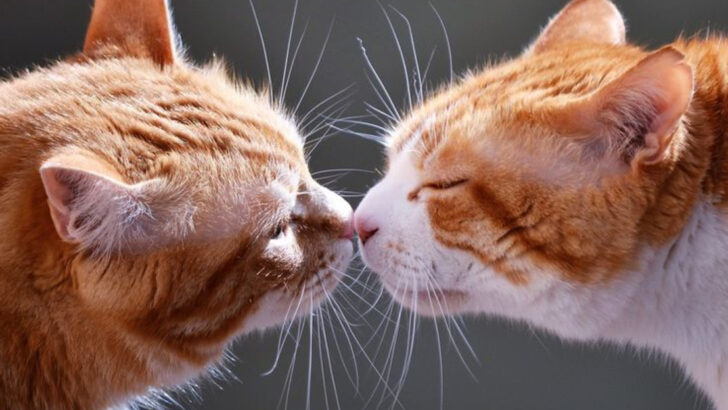Your cat is talking to you—all the time. You’re just not speaking the language.
That twitching tail? It’s not random. The slow blink? It’s not sleepy. The sideways ears, the arched back, the belly roll of doom—every little movement means something.
Cats are walking, purring mysteries, and decoding their body language is like cracking a furry, four-legged code.
Miss the signs, and you might get the claw. Catch them? You unlock a whole new level of trust.
So if you’ve ever wondered what that sudden zoom, tail flick, or blank stare really means…
You’re about to get answers.
Here are 15 cat body language clues—decoded at last.
Tail Held High
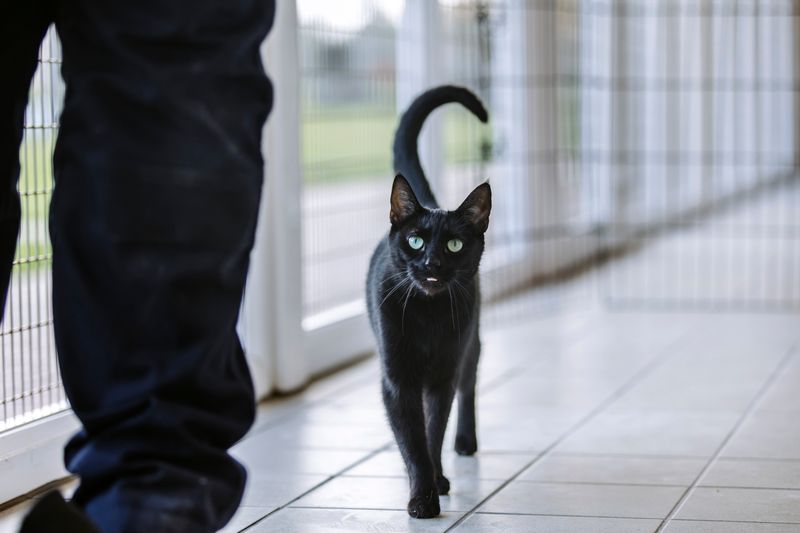
A cat strolling with its tail held high is a picture of confidence and contentment. This posture usually signifies a friendly greeting, signaling that the cat feels secure and approachable.
In many cases, a high tail can also indicate curiosity as the cat explores its surroundings with interest. It’s a positive sign that your feline is comfortable in its environment.
Whether meeting new people or pets, a tail held high is an invitation to engage, reflecting the cat’s social and amiable nature.
Slow Blinking
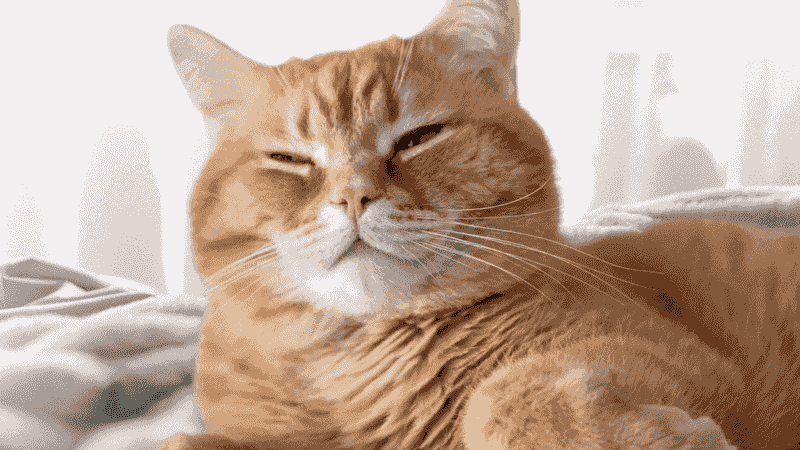
Slow blinking is often referred to as a cat’s way of blowing a kiss. This gentle gesture conveys trust and affection towards another being, whether human or feline.
When a cat slow blinks at you, it means they feel safe and secure in your presence. You can reciprocate by slowly blinking back, strengthening the bond between you.
This subtle form of communication is a testament to the deep trust cats can develop with those they love.
Puffed-Up Tail

When a cat puffs up its tail, it’s often a display of fear or aggression. This reaction is usually triggered by a sudden startle or perceived threat, making the cat appear larger and more intimidating.
Accompanied by an arched back and bristled fur, this posture is a defensive mechanism. It’s best to give the cat space to calm down.
Understanding this behavior helps prevent unnecessary stress or confrontation for your furry friend.
Kneading
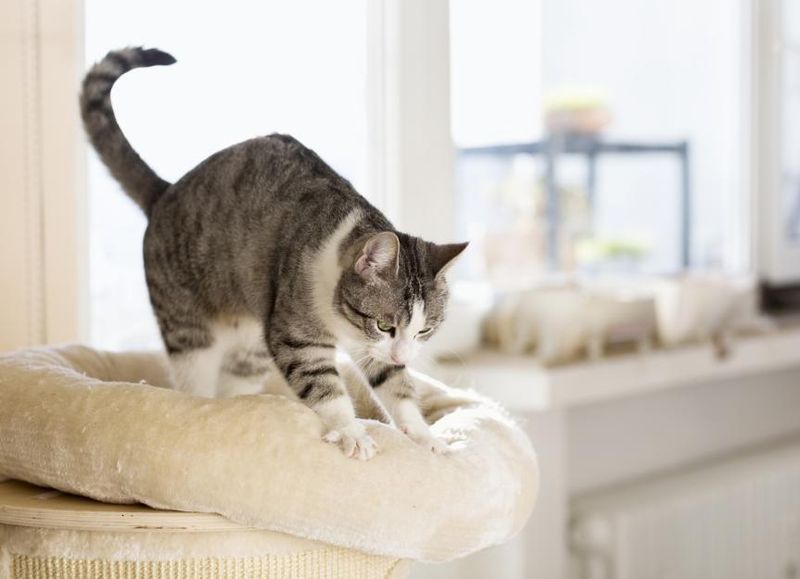
Kneading, or “making biscuits,” is a comforting behavior often seen in content cats. This rhythmic motion traces back to kittenhood, where it helps stimulate milk flow from the mother.
Adult cats knead when they feel happy and relaxed, often accompanied by purring. It’s a sign of affection and comfort.
This endearing behavior can also mark territory as the cat’s scent glands release pheromones while kneading.
Flattened Ears
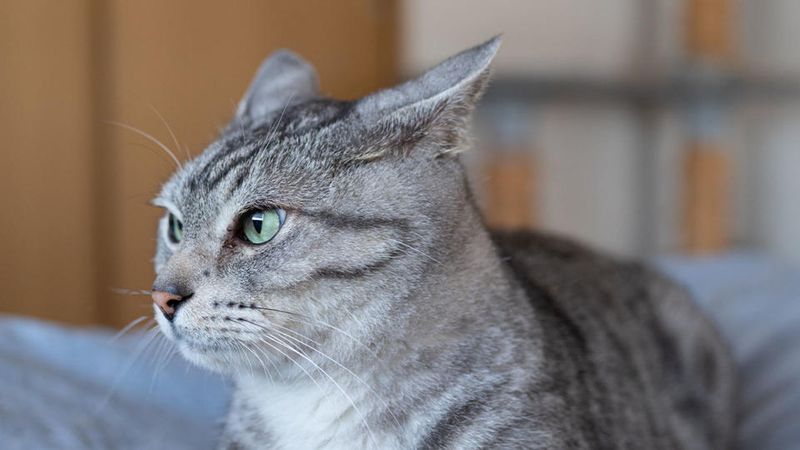
Flattened ears on a cat are a clear signal of fear, aggression, or irritation. This defensive stance often precedes a hissing or growling sound, warning potential threats to back off.
When a cat feels threatened, it will flatten its ears to protect them from injury during a confrontation.
Recognizing flattened ears allows you to address the underlying cause, whether it’s another animal or an uncomfortable environment, ensuring the cat feels safe again.
Whisker Position
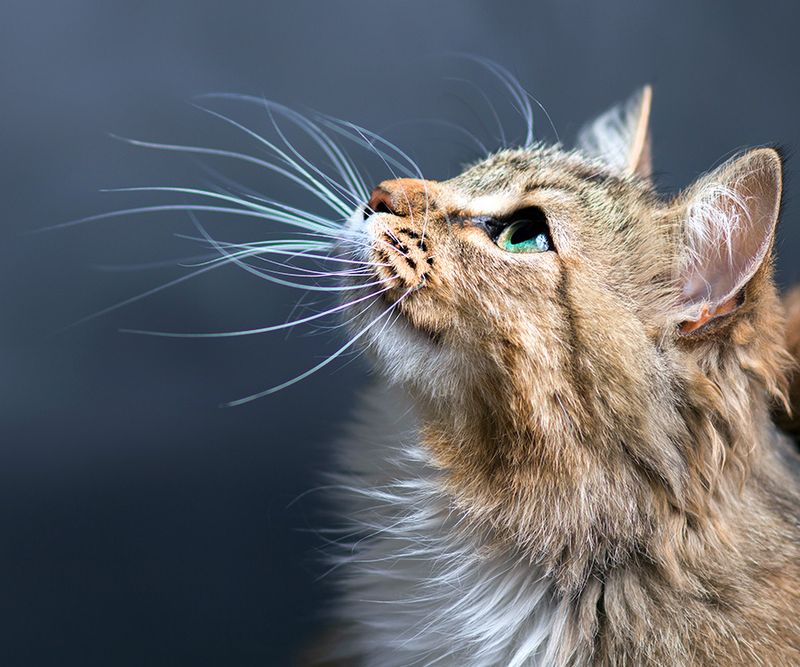
The position of a cat’s whiskers can reveal much about its emotional state and intentions. Forward-facing whiskers indicate curiosity and interest, often seen when a cat is engaged or hunting.
Conversely, whiskers pulled back against the face can signal fear or discomfort.
Paying attention to whisker movement offers additional insight into your cat’s mood and interactions, enhancing communication between you and your feline.
Tail Twitching

Tail twitching in cats can be both a sign of excitement and agitation. A gentle twitch might reflect anticipation, such as when a cat is focused on prey or a toy.
However, rapid twitching can also indicate annoyance or irritation, especially if accompanied by other signs like flattened ears.
Observing the entire context helps interpret whether the twitching tail is a precursor to play or a warning of discomfort.
Arched Back

An arched back in cats is often associated with either playfulness or aggression. When paired with a playful stance, it indicates readiness to engage in fun activities.
However, if accompanied by hissing or growling, it’s a clear warning sign.
This dual nature of the arched back highlights the importance of observing accompanying cues to understand the true meaning behind the posture.
Belly Exposure
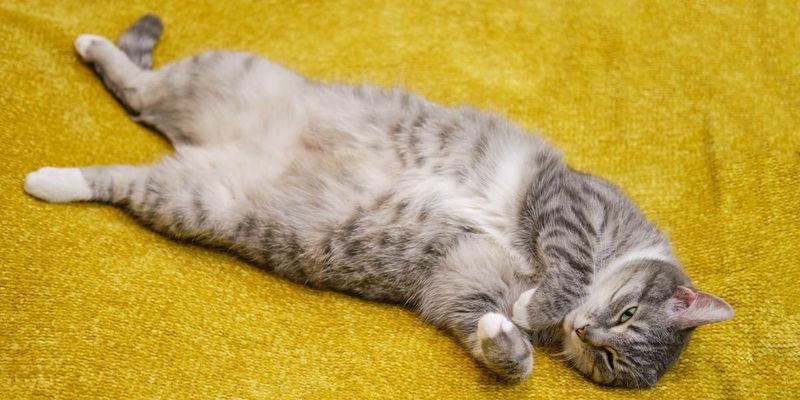
A cat exposing its belly is the ultimate sign of trust and relaxation. This vulnerable position means the cat feels secure in its surroundings.
However, it’s not always an invitation for a belly rub. Some cats may swat or nip if their belly is touched unexpectedly.
Understanding this nuanced behavior fosters mutual respect and strengthens your relationship with the cat.
Chirping Sounds
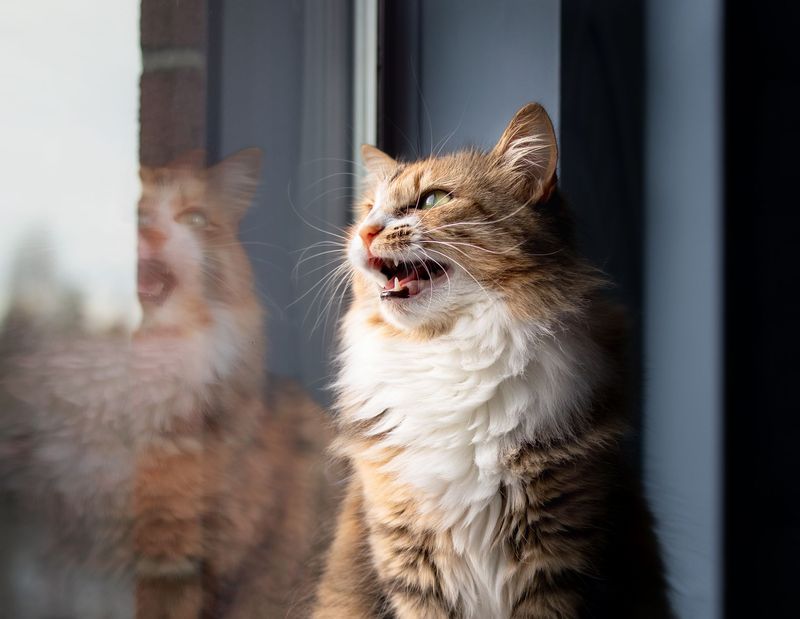
Chirping sounds in cats are often heard when they spot prey, such as birds or insects. This unique vocalization is a mix of excitement and frustration, as the cat observes but cannot reach its target.
It’s thought to mimic bird-like sounds, perhaps in an attempt to entice or communicate with them.
These intriguing sounds are a glimpse into the hunting instincts that still drive domestic cats.
Head Butting
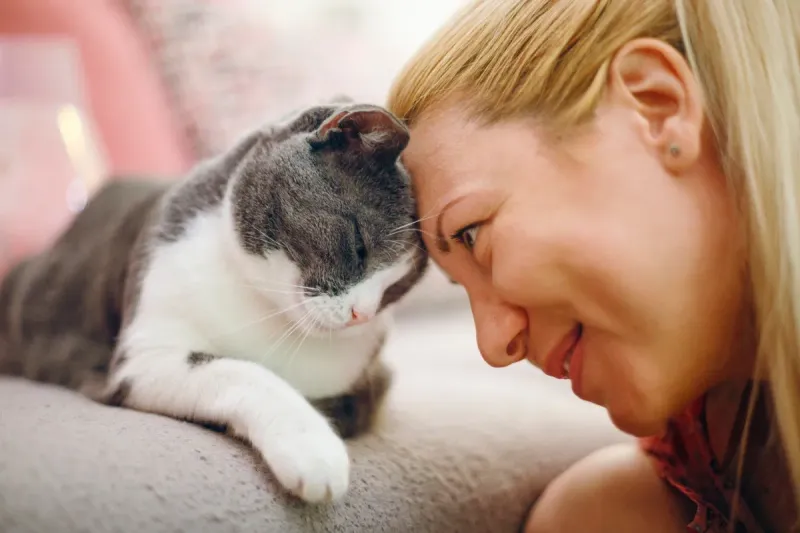
Head butting, or bunting, is a loving gesture in the feline world. When a cat head butts, it’s marking you with its scent, signifying ownership and affection.
This behavior is a compliment, indicating trust and a strong bond between the cat and its human.
Encouraging head butting sessions can enhance the connection, making your feline feel more secure and loved.
Purring
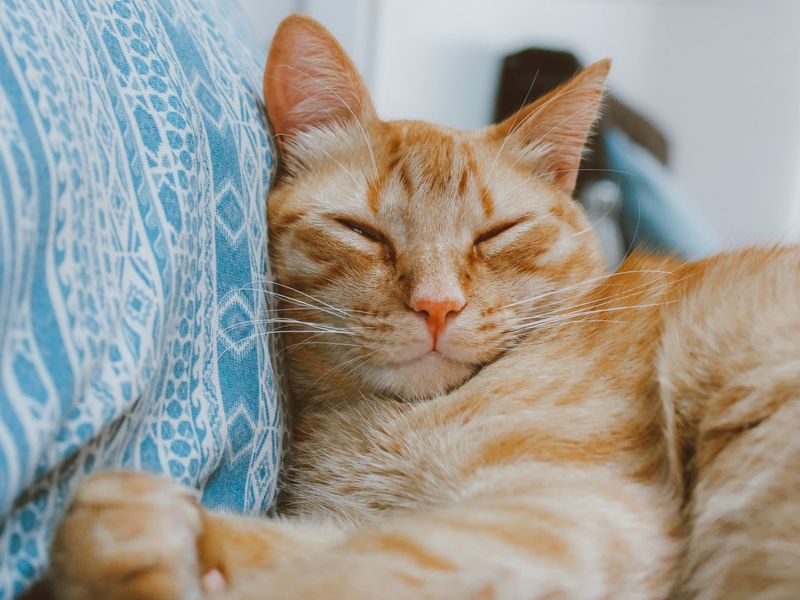
Purring is a soothing sound often associated with a cat’s contentment. It’s a sign that your feline is relaxed and comfortable in its environment.
However, purring can also occur in stressful situations, serving as a self-comforting mechanism.
Understanding the context of purring helps distinguish between pleasure and anxiety, deepening your insight into your cat’s emotional world.
Raised Hackles
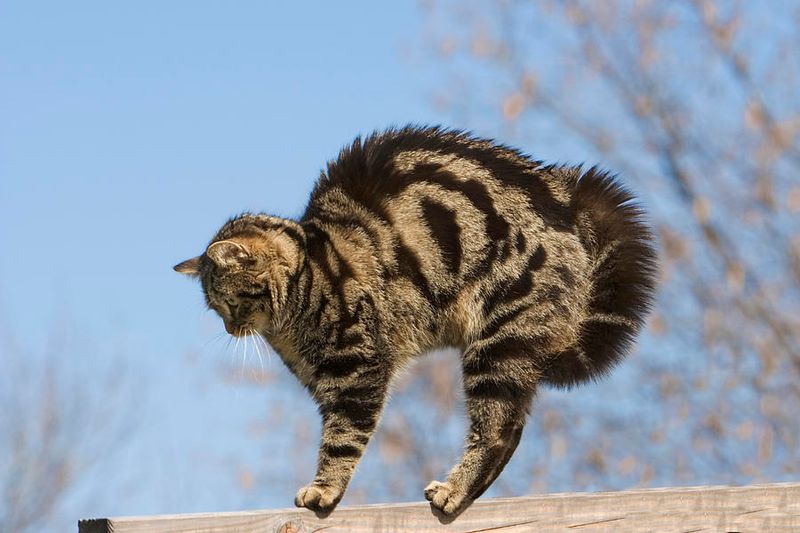
Raised hackles in cats, where the fur along the spine stands up, indicate heightened emotion. This physical reaction is commonly associated with fear or aggression.
It’s a reflexive action designed to make the cat appear larger and more intimidating.
Recognizing this sign helps in diffusing tense situations, ensuring your cat feels safe and protected.
Nose Touching
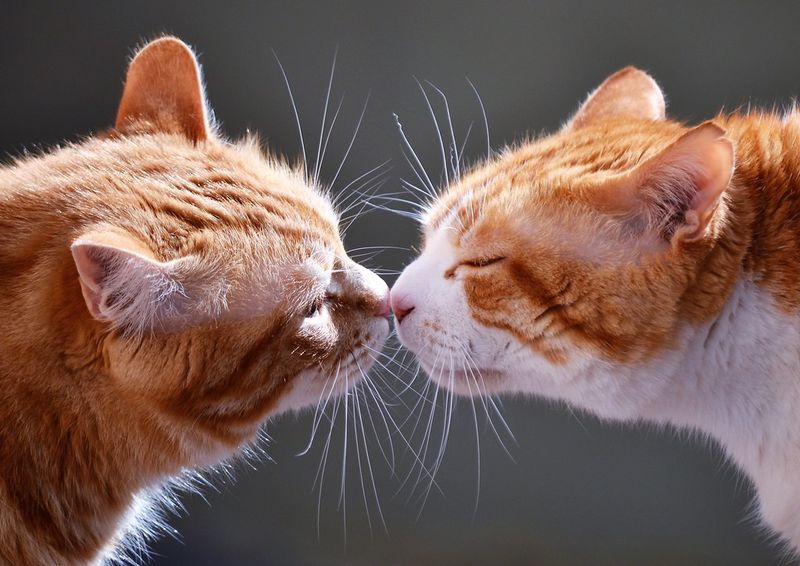
Nose touching between cats is a friendly greeting, akin to a handshake in humans. This gentle action is a sign of trust and acceptance within the feline community.
It involves mutual sniffing, allowing each cat to gather information and confirm identity.
Encouraging such interactions helps maintain harmony in multi-cat households, promoting a peaceful coexistence.
Grooming Behavior
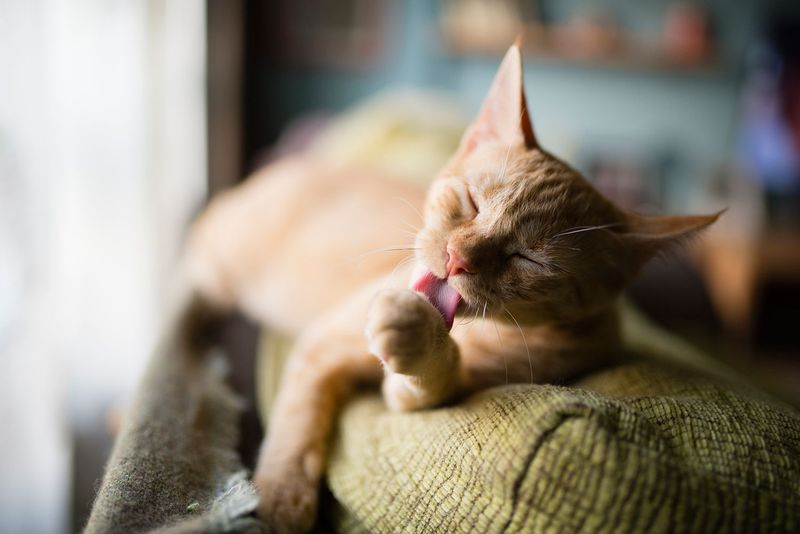
Grooming is a fundamental aspect of cat behavior. It’s not only about cleanliness but also serves as a stress-reliever and social activity.
Cats groom themselves to maintain their coats and spread natural oils, keeping their fur in pristine condition.
In multi-cat households, grooming each other is a bonding activity, reinforcing social structures and friendships.

